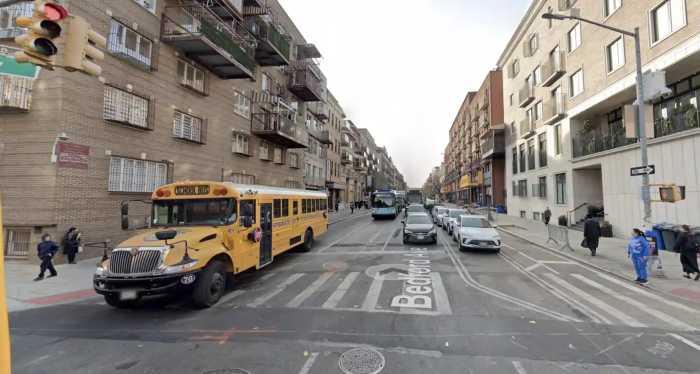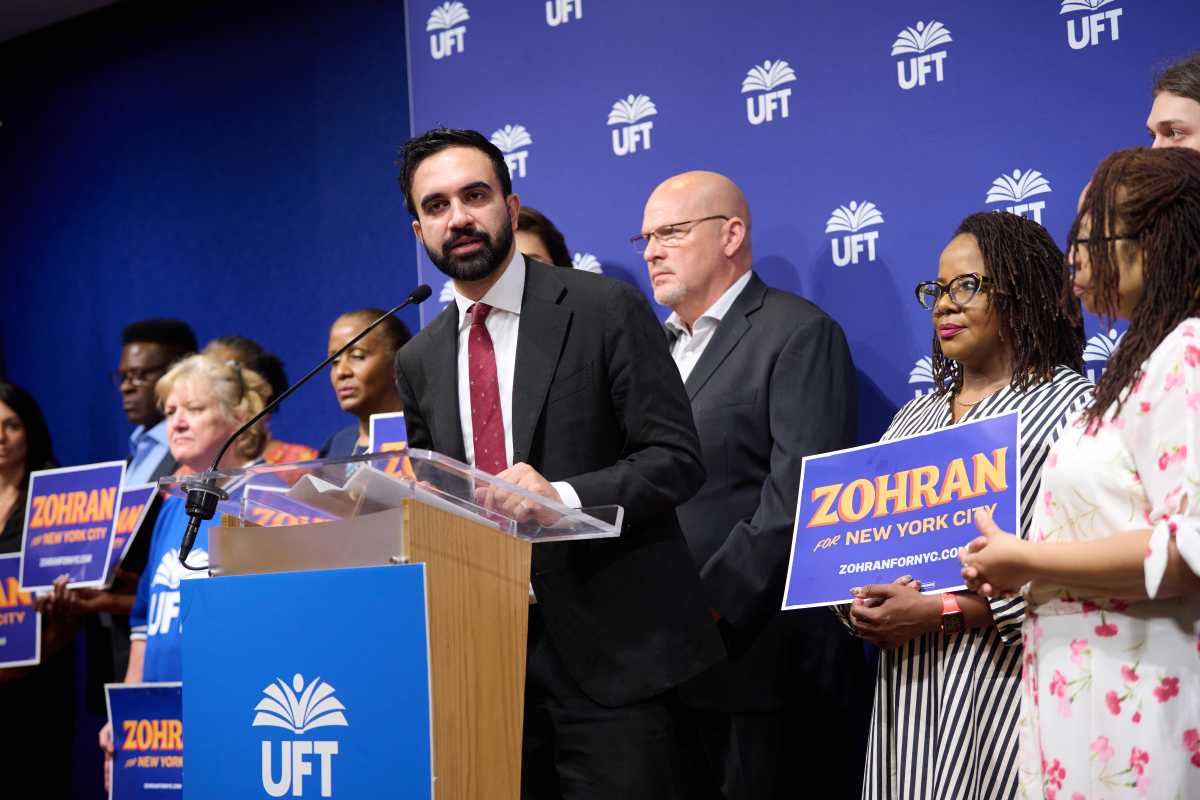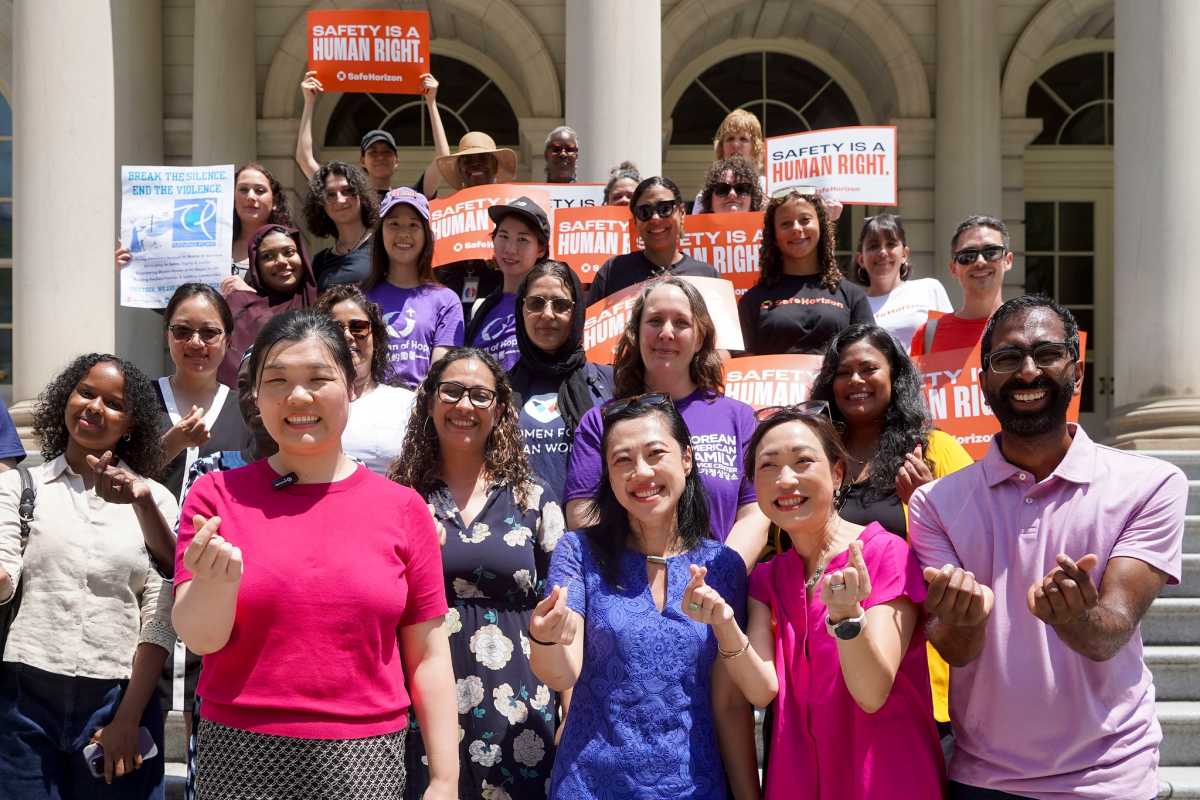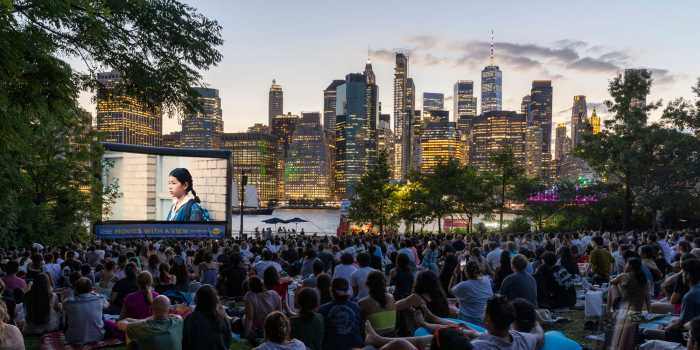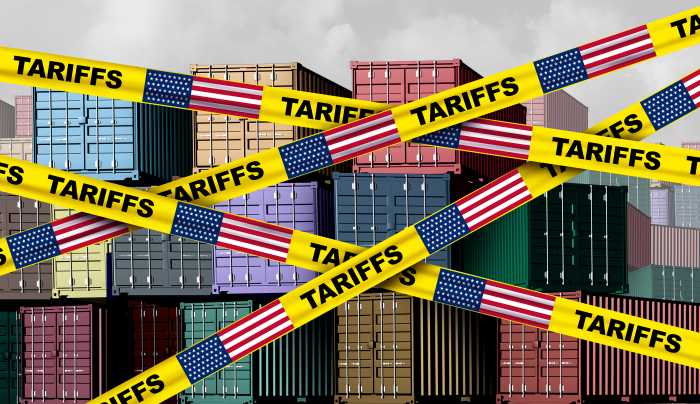A Flatbush man is taking another shot at realizing his vision of a Brooklyn teeming with trolleys once again.
Bob Diamond, a rail enthusiast who drove his own trolley along the Red Hook waterfront in the 1990s only to see his dreams dashed after the city cut off funding for a larger network of rails, has now proposed a new route that would, he says, bring investment and tourism from Downtown to Red Hook.
“Trolleys attract businesses and tourists, and the time to strike is now,” said Diamond, saying that there is cash for “green” transport systems from various economic stimulus streams.
The route would begin at Fulton and Adams streets, travel down Boerum Place and turn onto Atlantic Avenue towards Columbia Street. Upon reaching the Battery Tunnel on Columbia Street, the train would turn down Van Brunt Street and return on Richards Street.
Diamond said that his trolley would be a major step towards reconnecting Red Hook with the rest of Brooklyn.
“The trolley would bring people to the burgeoning commercial strip on Van Brunt Street, while also hitting the residential areas on Richards Street [on its way back Downtown],” said Diamond.
Ever the dreamer, Diamond even envisions the trolley using the long-abandoned Atlantic Avenue tunnel as it travels from Court Street to Hicks Street.
Some locals along the route hailed the idea.
“Let’s do it! It will be great for business and for people down here,” said Tommy Perez. “It would lift up the neighborhood!”
The trolley would run on electricity along rails laid at about $13 million a mile, if the project is modeled after one in Portland, Oregon.
Other locals expressed concern that the trolley — which would occupy at least one lane of traffic — could cause more congestion on the already clogged roads around Downtown.
“It might be good, if it didn’t slow traffic down — it’s too congested here already,” said Marie Testaverde, who was walking her dog on Columbia Street. “We have enough [tourists] visiting because of Brooklyn Bridge Park.”
But before you buy a round-trip ticket on Diamond’s trolley, understand that this vision is not exactly on the fast track to success. Indeed, this is only the latest in a long line of trolley-related proposals made by Diamond since at least the 1990s.
Still, there is a glimmer of hope, as Mayor Bloomberg endorsed streetcars in Red Hook last year, and a spokesman for the Department of Transportation said the agency is about to commence a study assessing the possibility of the project — and even reached out to Diamond for a more detailed Red Hook-Downtown trolley proposal after inquiries from The Brooklyn Paper.
The Obama administration has also allocated $8 billion in federal stimulus money to rail projects — over $150 million of which is going to New York State — and Gov. Paterson unveiled his own statewide rail improvement plan in 2009.
But Diamond’s dream has long been hampered by accusations that he is so driven and single-minded that he is difficult to work with. Indeed, the failure of Diamond’s last attempt at a trolley system was due in part to infighting among members of his group of volunteers that had committed to the project.
But that was six years ago, and Diamond — older and undoubtedly wiser, given the countless hours he spends doing research — says that the economic benefits of a trolley in Red Hook are just one reason to bring “the dodgers” into the new millennium.
“There is a tremendous environmental benefit as well,” Diamond said.
Alas, the original Dodgers will remain in Los Angeles.


